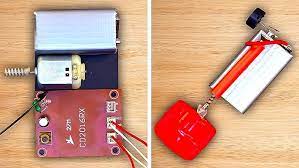In this digital age, where technology is at the forefront of our lives, we often find ourselves in situations where our IT systems may fail us. Whether it’s a pesky software glitch, a slow computer, or a network issue, these IT problems can be a source of frustration and downtime. But what if I told you that you could empower yourself to tackle these issues and become your own IT hero? In this comprehensive guide, we will explore a myriad of DIY IT fixes that can help you overcome common technology hiccups. Let’s dive in.
1. Speed Up Your Sluggish Computer
Is your computer moving at a snail’s pace? Don’t rush to the repair shop just yet. There are several DIY fixes that can give your computer a speed boost:
a. Clean Up Your Hard Drive
Over time, your hard drive can become cluttered with unnecessary files. Use disk cleanup tools to get rid of these files and free up space.
b. Manage Startup Programs
Too many programs launching at startup can slow down your computer. Disable unnecessary startup programs to speed things up.
c. Upgrade Your RAM
If your computer still lags, consider upgrading your RAM. It’s a cost-effective way to give your machine a performance boost.
2. Troubleshooting Common Software Issues
Software glitches can be incredibly frustrating, but you can often resolve them on your own. Here are some common software issues and how to tackle them:
a. Fixing Software Crashes
If an application keeps crashing, try updating it. Outdated software can lead to compatibility issues and crashes.
b. Dealing with Malware and Viruses
Install reputable antivirus software and perform regular scans. Malware and viruses can wreak havoc on your system’s performance.
c. Windows Troubleshooting
For Windows users, the built-in troubleshooting tools can help diagnose and repair various system issues.
3. Network Problems: DIY Solutions
A stable network is crucial for modern life, but even the best networks can run into problems. Here’s how you can resolve common network issues:
a. Slow Internet
If your internet is sluggish, try rebooting your modem and router. Sometimes, a simple reset can solve the problem.
b. Wi-Fi Connectivity Issues
Is your Wi-Fi signal weak or intermittent? Check for interference from other devices and consider repositioning your router for better coverage.
c. Network Security
Ensure that your network is secure by setting a strong password and enabling encryption. This can prevent unauthorized access and protect your data.
4. Hardware Repairs: The Basics
While some hardware issues may require professional help, there are a few hardware repairs you can tackle on your own:
a. Replacing a Hard Drive
If your hard drive is failing, you can replace it with a new one. Make sure to back up your data before attempting this.
b. Cleaning Your Computer
Dust and debris can accumulate inside your computer, leading to overheating. Regularly clean your computer to prevent this.
5. Data Backup and Recovery
One of the most critical IT skills you can learn is data backup and recovery. Accidents happen, and having a backup of your data can save you from disaster:
a. Regular Backups
Set up automatic backups to an external hard drive or cloud storage to ensure you don’t lose your important files.
b. Data Recovery Software
In case you accidentally delete a file, data recovery software can often retrieve it. Be sure to act quickly, as overwritten files are more challenging to recover.
6. Staying Informed
The world of technology is ever-evolving, and staying informed is crucial for effective DIY IT fixes. Here are some tips to keep yourself up to date:
a. Follow Tech Blogs
Subscribe to technology blogs and forums to stay informed about the latest developments, tips, and troubleshooting guides.
b. Online Courses
Consider taking online courses or watching video tutorials to enhance your IT skills.


